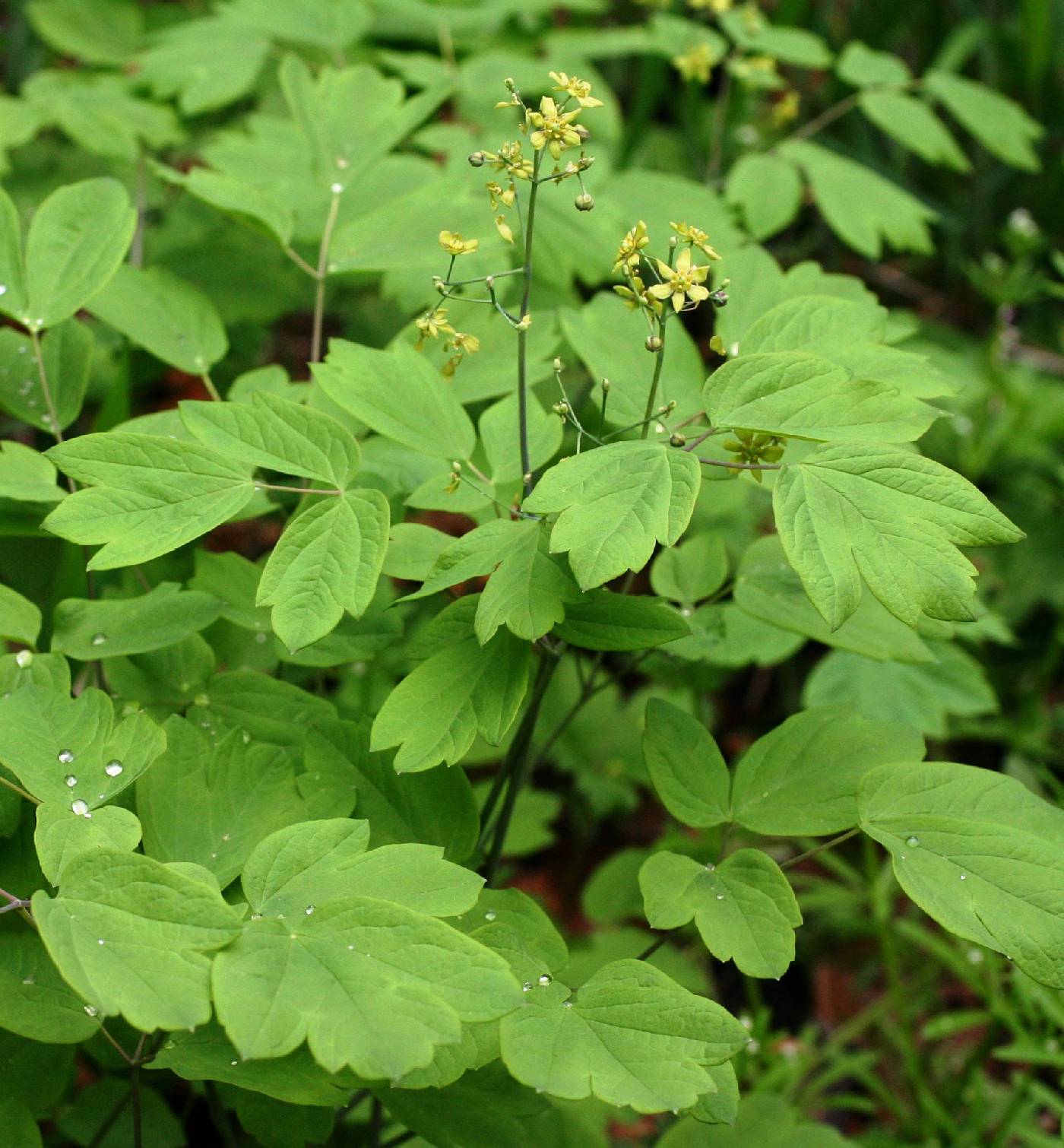Caulophyllum
|
Family: Berberidaceae |
Herbs , perennial, deciduous, to 2-9 dm, glabrous. Rhizomes nodose, producing 2 leaves per year. Aerial stems present. Leaves caducous, cauline, 2-ranked, 1st leaf larger than 2d leaf, 2-4-ternately compound; petioles short or absent. Leaf blade broadly obovate in overall outline; rachis pulvinate; leaflet blades broadly obovate, entire or lobed, margins not toothed; venation pinnate to palmate. Inflorescences terminal, compound cymes. Flowers 3-merous, 6-20 mm; bracteoles caducous, 3-4, sepaloid; sepals 6, yellow, purple, red, brown, or green, petaloid; petals 6, fan-shaped, bearing nectar; stamens 6; anthers dehiscing by 2 apically hinged flaps; pollen exine reticulate; ovary bladderlike; placentation appearing basal; styles eccentric. Fruits not developed, ovary wall soon rupturing. Seeds 2, elevated on elongating stalk, naked at maturity; seed coat blue, fleshy, glaucous; aril absent. x = 8. Caulophyllum species are understory herbs of mesophytic forests, alluvial flats, rich mesic slopes, and limestone slopes. The seeds of Caulophyllum are buoyant and showy and may be dispersed by water as well as other means; seed germination is hypogeal, the cotyledons remaining underground. Caulophyllum is occasionally cultivated in woodland gardens.
Sep 6, biseriate, petaloid, subtended by 3 or 4 sepal-like bracts; pet 6, biseriate, represented only by small, stipitate-flabellate, gland-like nectaries opposite and much shorter than the sep; stamens 6; ovary asymmetrical, tapering above and with a minute apicolateral stigma; poisonous smooth perennial herbs, the erect stem bearing above the middle a single large, sessile, triternate lf, simulating 3 biternate lvs, and another smaller lf just below the infl; ovary soon ruptured by the enlarging seeds, which ripen fully exposed on short, stout stalks and resemble drupes. 2, the other in e. Asia. Gleason, Henry A. & Cronquist, Arthur J. 1991. Manual of vascular plants of northeastern United States and adjacent Canada. lxxv + 910 pp. ©The New York Botanical Garden. All rights reserved. Used by permission. |

